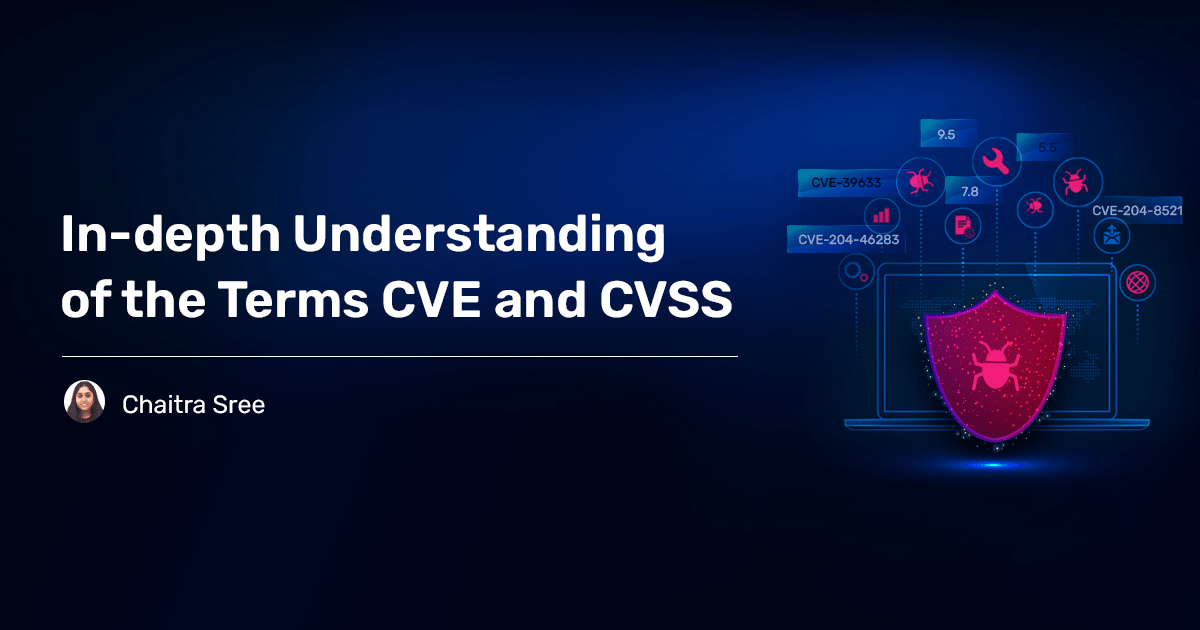In cybersecurity, the terms CVE vs CVSS often create confusion for those trying to understand vulnerabilities and their severity. While they are definitely related, they serve distinct purposes in the process of assessing and prioritizing risks. Remediating such risks is simpler with a patch management software.
In this blog, Let’s explore in depth the terms CVE and CVSS, how they differ from each other, and what factors contribute to them.
What is CVE?
The United States National Cybersecurity FFRDC, managed by the MITRE Corporation, assigns standardized identifiers to publicly known vulnerabilities, exposures, or risks through the CVE (Common Vulnerabilities and Exposures) system.
It provides a referenceable name for specific security loopholes, whether vulnerabilities or exposures, making it easier for organizations to discuss and address these issues.
Each CVE includes a unique identifier, the year in which it was detected, and it always has an acronym CVE.
How is a Vulnerability Categorized as CVE?
A vulnerability receives a CVE identifier when it is publicly disclosed and documented in the CVE database. This process involves submitting details of the vulnerability to MITRE or other CVE Numbering Authorities (CNAs), who review and assign a CVE identifier.
This identifier facilitates communication and coordination among security professionals, vendors, and researchers, allowing them to catalog and address the vulnerability effectively.
What is CVSS?
The Common Vulnerability Scoring System (CVSS) assesses the severity of vulnerabilities. Developed by the Forum of Incident Response and Security Teams (FIRST), CVSS provides a standardized method for scoring vulnerabilities based on their impact and exploitability. This score helps organizations prioritize which vulnerabilities to address first based on their potential risk.
What Metrics Contribute to CVSS Scores?
CVSS scores derive from a set of metrics that measure various aspects of a vulnerability:
- Base Metrics: Enterprises rely upon these metrics the most. They include the characteristics of risks that don’t change over time. Exploitability and impact metrics mainly contribute to base metrics.
- Temporal Metrics: These metrics reflect the current state of exploit techniques and the availability of fixes. As the name suggests, the information added will change based on the status of risks. It includes exploit code maturity, remediation level, and report confidence.
- Environmental Metrics: Organizations use these metrics to adjust the base score according to specific environment and the importance of affected system. Environmental metrics consider the following factors: the business criticality of the asset and the identification of mitigating controls.
Difference between CVE vs CVSS
| CVE | CVSS |
| CVE stands for common vulnerability and exposure | CVSS stands for common vulnerability scoring system |
| Provides identifier for each publicly known vulnerability | Provides numerical score to assess the severity of vulnerability |
| Usually used by security vendors, researchers to identify vulnerability | Used by enterprises to prioritize based on impact |
| Usually represented has CVE-year-unique identifier | Usually numerically represented out of 10 |
Limitations of CVE and CVSS score
Limitations of CVE: Having a CVE for vulnerabilities and exposures allows enterprises to ignore other critical risks that will leave their network open for cyberattacks.
Limitation of CVSS score: This scoring is based only on static metrics and does not involve real-world conditions. This metrics is misleading and will lead enterprises to focus on risks that are not critical
Final Thoughts
While CVE vs CVSS are related, they serve different roles. CVE provides a unique identifier and basic description of a vulnerability, but it does not assess the severity level. In contrast, CVSS provides a quantitative score that reflects the severity of a vulnerability, helping organizations prioritize their response.
Understanding both can enhance an organization’s ability to manage and mitigate cybersecurity risks effectively.


